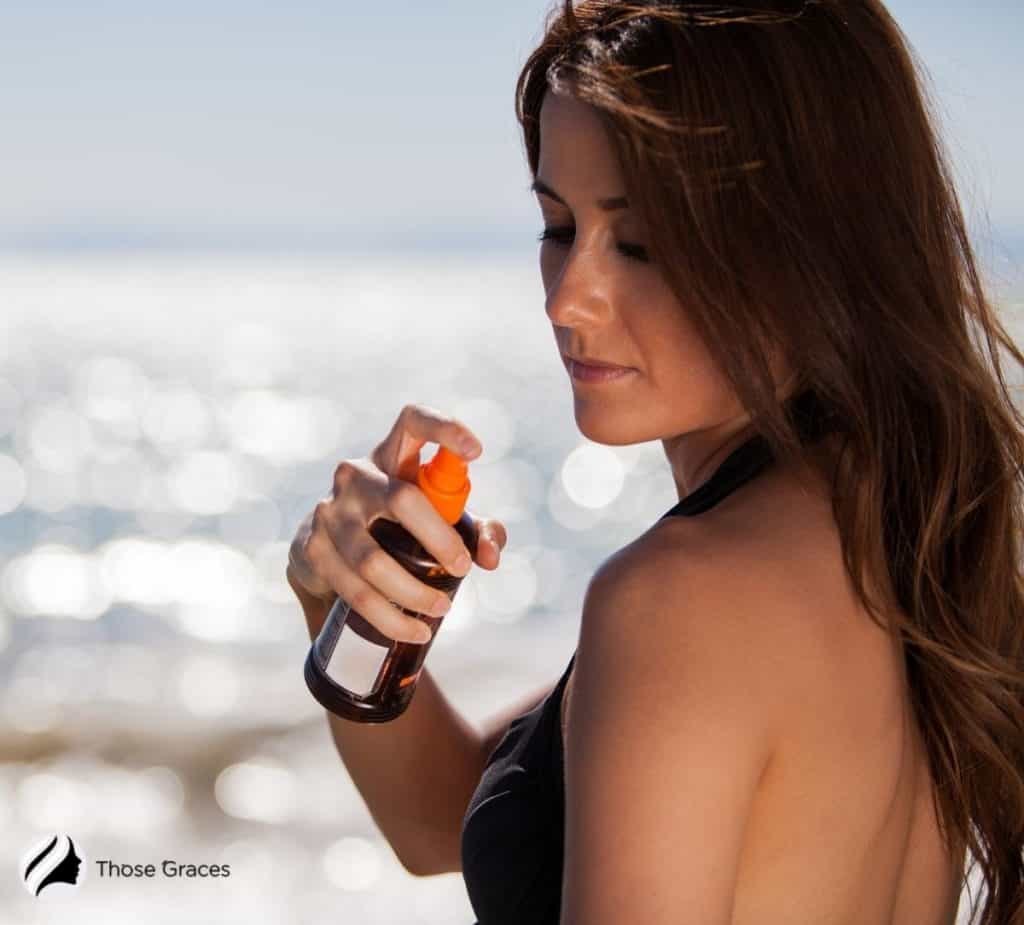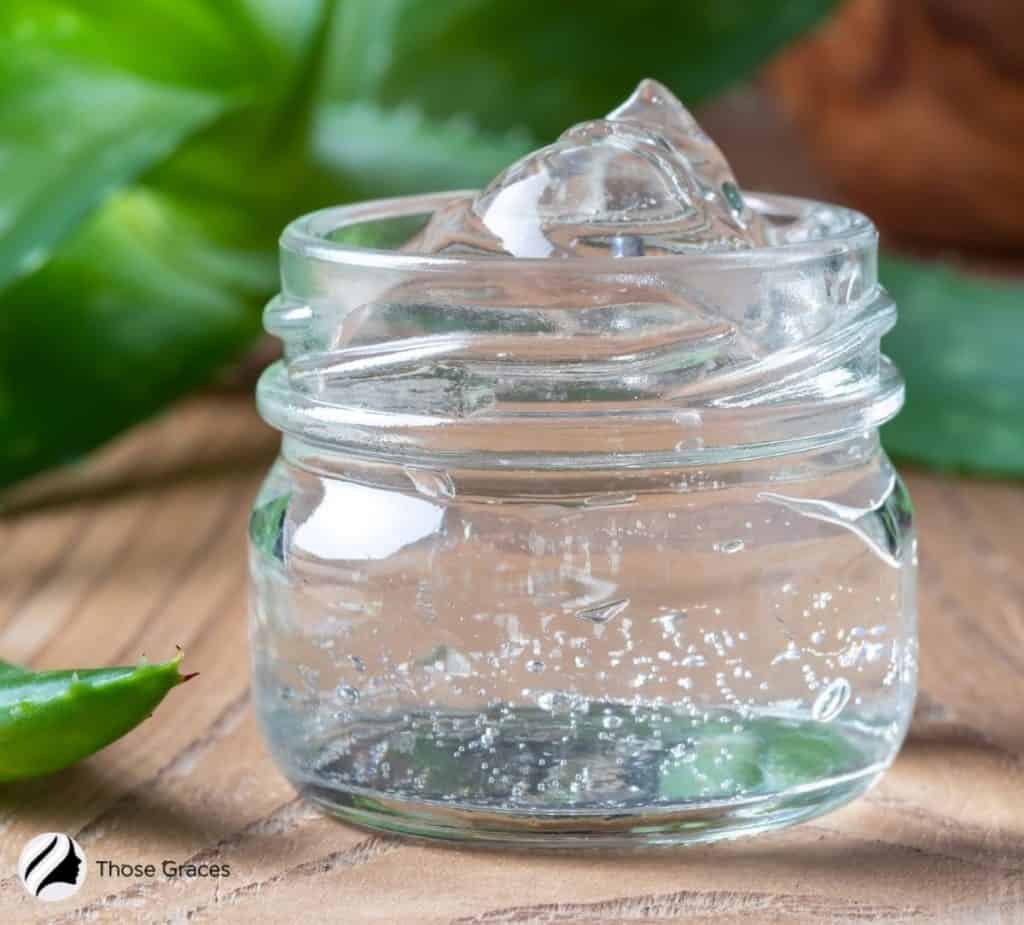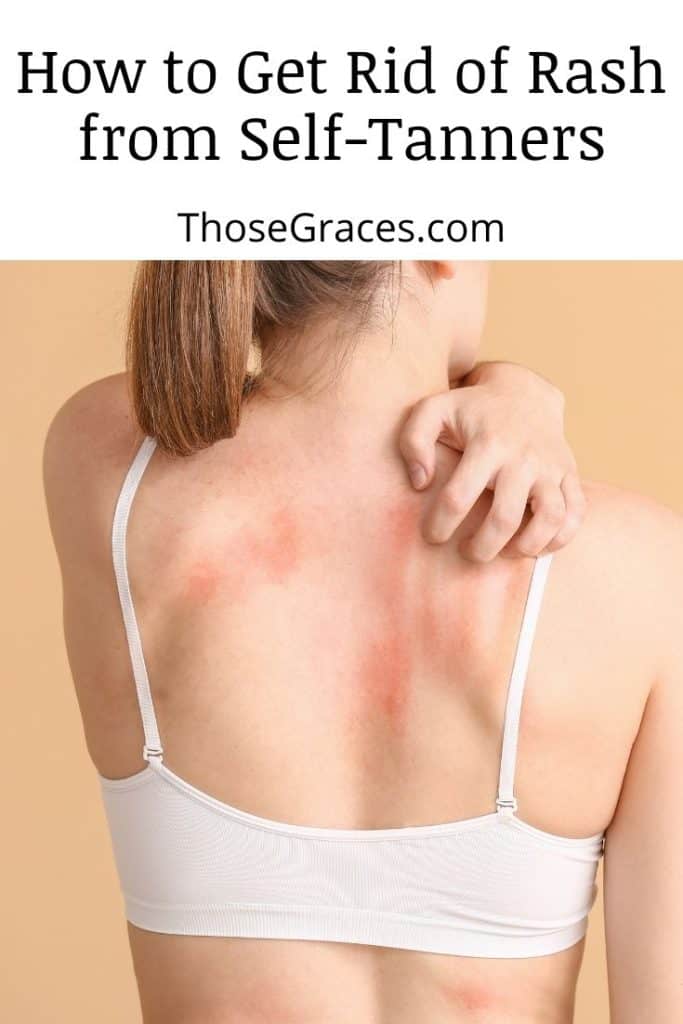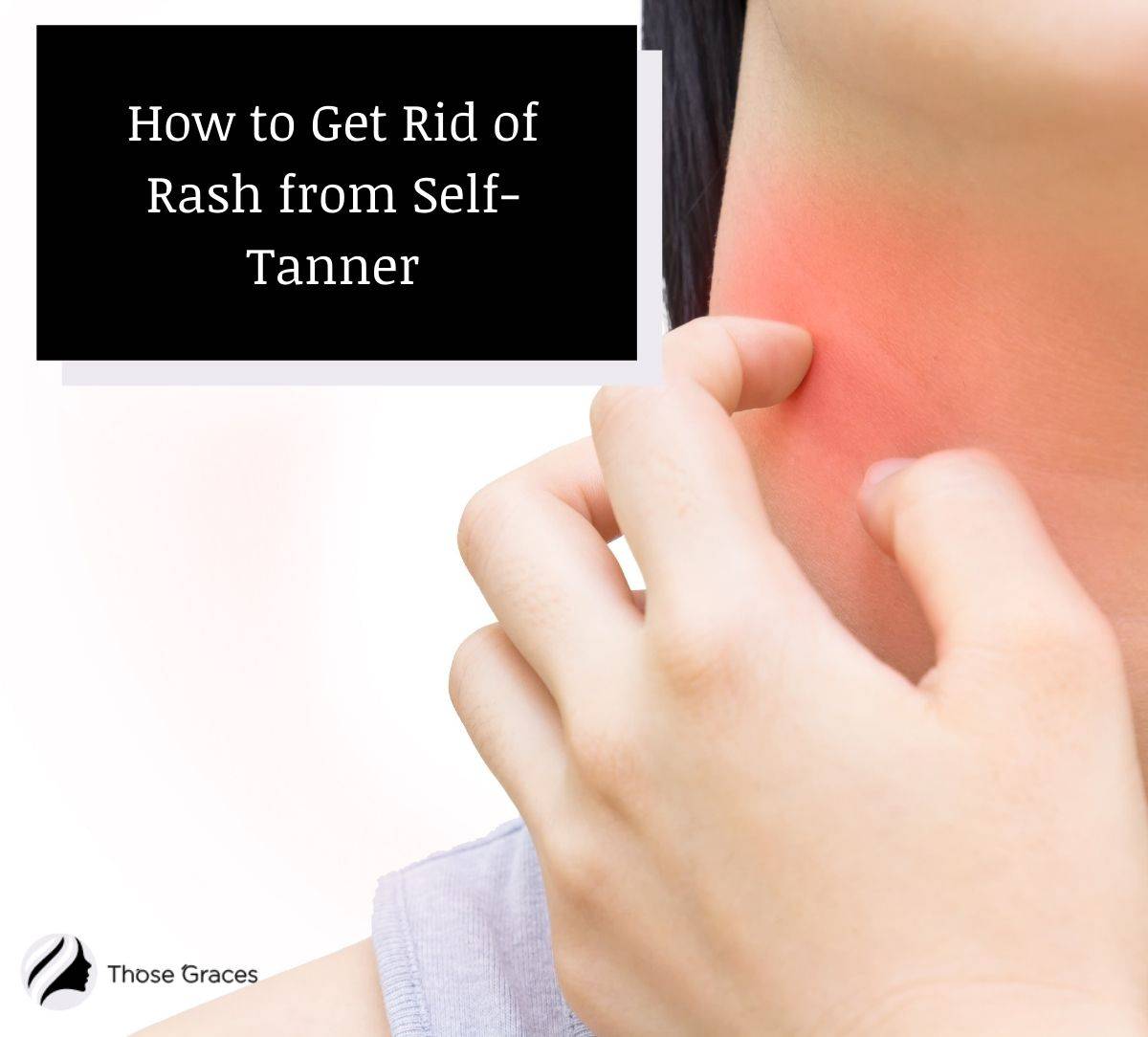You’re probably one of the self-tanning enthusiasts with sensitive skin wondering how to get rid of a rash from a self-tanner.
You’re not the only one battling this situation lately; I’ve been there too. In my self-tanning days, I did go through seasons of rash that equally left me devastated.
It is these rash episodes that pushed me to carry out this research.
READ MORE: How to Apply Self Tanner Without Mitt?
Table of Contents
Why Do I Get a Rash When I Fake Tan or Use a Self-Tanner?
But before I get deep into the article, here’s a quick disclaimer:
I am not a medical doctor, so I don’t advocate self-tanning, especially for inexperienced first-timers.
Also, nothing in this post should be construed as medical advice. If you’re dealing with self-tanning rash symptoms, see a doctor.
Now that I have everything clear let’s learn about self-tanning and its rash effects.
Self-tanning is an excellent technique for achieving a bronze hue without the sun’s damaging rays.

After applying a self-tanner, many users report minor difficulties like streaking, spots, or orange hands.
Some people experience severe side effects, such as a rash from using a self-tanner. Our skin can react to different products for a variety of reasons.
So why do people get a rash?
- One of the reasons could be due to dry skin. Tanning lamps can drain the moisture off the top layer of your skin if you begin your tanning session with dry skin. This can result in itchy spots.
- Also, if you have sensitive skin, you may be aware of products that make you irritated after using them, notably if they contain harsh substances.
- It’s not uncommon to experience an allergic reaction to a tanning product. Certain chemicals used to darken the skin or preserve the formula in self-tanners can irritate the skin.
- An allergic reaction to DHA.
So how do most self-tanners work?
Learn about Heat Rash from Tanning Bed in this video!
The Basics of Allergic Reactions to Self-Tanners
Most of the good sunless tanners use a chemical called DHA (dihydroxyacetone. This is the pigment-producing ingredient in self-tanners.
DHA is a form of sugar that combines with the amino acids in the epidermis’ top layer (the outer layer of your skin).
This chemical reaction produces melanoidin (2), the pigment that gives skin its tanned appearance.
Even though this chemical reaction is perfectly safe, it can sometimes produce itching. DHA-induced contact dermatitis (3) is a rare occurrence.

Because DHA is sugar, it is naturally available in sugar sources such as sugar beets or cane sugar. It is also created synthetically in a lab.
Many self-tanners also contain a guide color or bronzer made from food colors and other colorings.
Although this bronzer contains coloring to help users see where they’ve already applied the product for a more even tan, the DHA is responsible for the ultimate tan.
Try switching to an organic, natural self-tanner if you think your skin reacts to the self-tanner.
Today’s market offers various natural and organic self-tanners.
Can I Be Allergic to DHA in Self-Tanner?
According to reports, approximately two out of every 100,000 persons (1) (0.00002%) are allergic to DHA. So, most of the time, your skin reacts to something else in the product.
Other substances and chemicals in the self-tanner preparation, such as preservatives and colorings, are responsible for most sensitivities.
Although there is a low percentage of people allergic to DHA, it’s impossible to rule it out as a contributing factor to skin reactions.
How Can I Determine if I Have a DHA Allergy Reaction?
There have been no medical reports of severe adverse reactions to self-tanner DHA.
If you’re among the 0.00002% of people allergic to self-tanning DHA, you might experience itchy and inflamed skin after using the product.
You shouldn’t link symptoms like wheezing, coughing, and shortness of breath to self-tanner DHA.
The technical name for DHA allergic response is contact dermatitis.
Mayo Clinic (4) describes contact dermatitis as a red, itchy rash that results from direct contact with a substance or an allergic reaction.
Although the rash isn’t contagious or life-threatening, it can be pretty unpleasant.
Mayo Clinic further explains that many products, like cosmetics, soaps, and plants, elicit similar reactions.
Treating it is pretty straightforward. You need first to identify and prevent the source of your reaction. Doing this will make the rash clear up in two to four weeks.
Self-Tanner’s Allergy Symptoms
So, you used a DHA-containing tanning product, and now your skin feels particularly irritated or itchy after applying self-tan?
These are some symptoms that you may be reacting to a self-tanner.
These reactions can happen right away or after a few hours, depending on how quickly your skin adjusts.
You would also notice that your skin is drier than usual, which causes you to scratch more.
Others have reported a “gurgling stomach”, nausea, and flu-like symptoms after using specific tanning products.
Nutritionist Jennifer May broke down the relationship between artificial tan and disease.
She had examined the link between beauty products and their adverse effects. She is also the owner of Sydney City Nutritionist (5).
Jennifer noted that users of fake tan who have food intolerances could have adverse side effects after using particular products.
But how?
Jennifer believes it could be due to various factors, including a weakened digestive system.
It could be related to a higher toxic load from dietary responses, reducing the ability to detox.
DHA is also responsible for the “yeasty” scent of fake tan.
Many people with food intolerances have trouble absorbing and processing carbohydrates. Such as fructose and lactose.
The reaction can be caused by DHA not being correctly processed by the liver, causing it to react in the digestive system.
When Should You Consult the Doctor?
Check any rash that appears after using a tanning bed. If the inflammation persists for over five days, seek medical attention.
Consult your doctor or dermatologist to see if there are any more issues. Allergic responses can be life-threatening.
Scratching a rash excessively can break the top layer of your skin, resulting in infection.
Seek medical help right away if you observe discolored pus flowing from the rash. Or if you develop a fever because of the rash.
The doctor will first do a physical examination to rule out other probable reasons for your symptoms.
Once they’ve figured out which allergy is causing your problems, they’ll prescribe an antihistamine to help you feel better. If your symptoms grow severe, they can give you an epinephrine pen.
The video below demonstrates how to conduct the test at home to determine which self-tanner is best for your skin:
How to Get Rid of a Rash from Self-Tanner at Home
A rash caused by a self-tanner usually goes away in a few days. Meanwhile, the itching and pain caused by the inflammation might be distracting.
Start with at-home therapies to see if they help you deal with your symptoms:
1. Avoid Excessive Sun Exposure
If you must go outside before the rash subsides, use sunscreen with an SPF of at least 30. Allow your skin to heal by covering your inflammation with loose-fitting garments made of natural fibers.
It’s vital to allow your skin to breathe to heal more quickly. Tight-fitting clothing, as well as any rubbing or chafing, can aggravate the irritation.
2. Use a Topical Cream or Aloe Vera

Applying aloe vera gel to the rash can help relieve irritation and redness. If you think an allergic reaction caused your inflammation, an antihistamine cream may help.
Irritation, swelling, and inflammation may be relieved with a 1% hydrocortisone cream.
Calamine Lotion is another option. While not the most appealing product scent, Calamine lotion can be a lifesaver when your skin is itchy and irritated.
Because it dries white and can dry up your skin, I recommend using it immediately before night and then washing it off in the morning.
If your reaction is irritating, the relief provided by the lotion will most likely be worth the slightly unusual color.
3. Take a Warm Bath
You won’t be able to wash off self-tanning products in the classic sense once they’ve had time to react with your skin.

But jumping in the shower and gently rinsing your skin with warm water is still the best first step.
Use a fragrant-free soap. After you’ve finished, gently pat the inflamed skin dry.
You don’t want to aggravate the situation by drying it too quickly. Irritation can also be relieved by soaking in a lukewarm bath with colloidal oatmeal.
4. Take Antihistamines
Consider taking an anti-allergy prescription. If you believe it’s an actual allergic reaction rather than contact dermatitis. Ensure you take it exactly as directed and at the proper dosage.
Also, if you leave your fake tanner on overnight, you should consider changing the sheets.
This is because our bodies sweat while we sleep, leaving a small amount of bronzing residue on the sheets that could further irritate your skin.
FAQs
How Do I Test out a New Self-Tanner?
Do this a few days ahead of time to allow the product to mature, and if no irritation occurs, you should be fine!
Can You Put Self-Tanner Over a Rash?
Use a sponge blender to apply the product. Then gently work it into the area before lightly buffing it away and repeating the process a few times to build color.
Conclusion
So, if you’ve been using a self-tanner and have started to experience a rash, don’t worry – I’ve got the solution for you.
Just follow these simple tips on how to get rid of a rash from self-tanner, and you should be back to your bronzed goddess status in no time!

Have you ever dealt with this issue before? How did you solve it? Let us know in the comments below.
Resources
- 1. Itching: Pictures, Causes, Diagnosis, Home Remedies & More [Internet]. Healthline. 2019. Available from: https://www.healthline.com/health/itching#causes
- 2. Ciriminna R, Fidalgo A, Ilharco LM, Pagliaro M. Dihydroxyacetone: An Updated Insight into an Important Bioproduct. ChemistryOpen. 2018;7:233–6.
- 3. Allergic contact dermatitis | DermNet NZ [Internet]. dermnetnz.org. Available from: https://dermnetnz.org/topics/allergic-contact-dermatitis
- 4. Mayo Clinic. Contact dermatitis – Symptoms and causes [Internet]. Mayo Clinic. 2018. Available from: https://www.mayoclinic.org/diseases-conditions/contact-dermatitis/symptoms-causes/syc-20352742
- 5. Nutritionist Sydney CBD 2000 | Highly successful Nutrition programs [Internet]. sydcitynut. [cited 2022 May 3]. Available from: https://www.sydneycitynutritionist.com/
- 6. June 12 MCD, 2017. Watch Celeb Skincare Expert Nichola Joss Demonstrate Her Signature “Inner Facial” [Internet]. FASHION Magazine. 2017 [cited 2022 May 3]. Available from: https://fashionmagazine.com/beauty-grooming/nichola-joss-inner-facial/


